Creating a Windows 11 recovery USB drive is a smart precaution to help you restore your PC in case of major software issues or hardware failures. This guide will show you how to create a recovery drive and use it to get your system back on track.
Keep in mind that the recovery drive does not back up your personal files or any third-party apps installed on your computer. It only includes system files and preloaded applications that came with Windows.
It's also advisable to recreate the recovery drive periodically because Windows updates can change system files. We recommend creating a new recovery drive annually to ensure it includes the latest updates.
Note: You will need a USB drive with at least 16 GB of space (preferably 32 GB) to create a recovery drive.
Create a recovery drive from the Control Panel
Creating a recovery USB drive in Windows 11 is straightforward and doesn't require navigating through complex menus or using the Command Prompt. Just follow these steps to get started.
Step 1: Open the Start menu and type Control in the search bar. Then, click on the Control Panel application from the results.
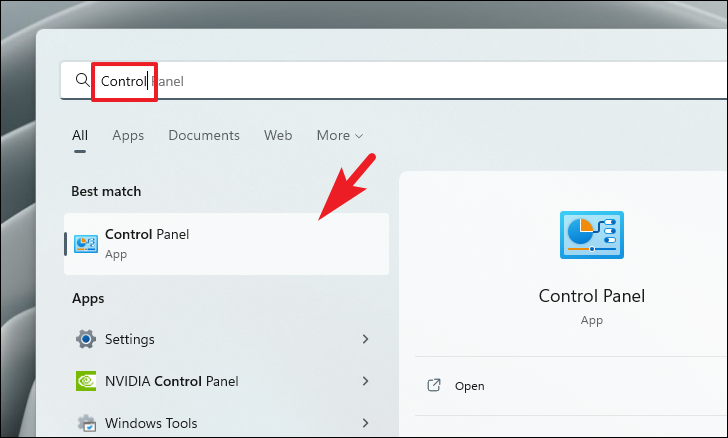
Step 2: In the Control Panel, set the 'View by' option to Large icons or Small icons if necessary, then click on Recovery.
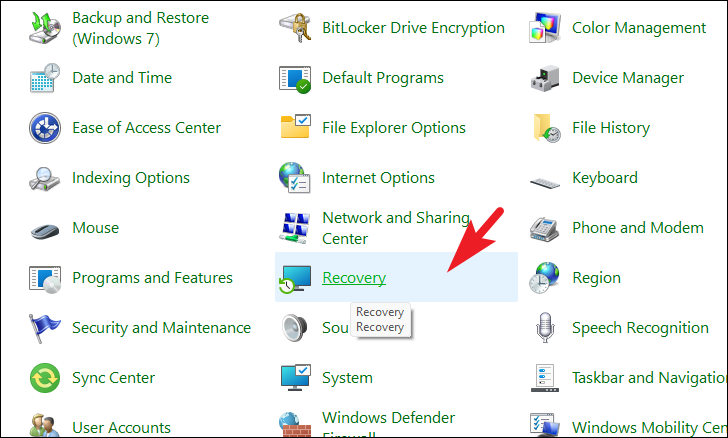
Step 3: Click on Create a recovery drive. This will open the Recovery Drive window.

Step 4: If prompted by User Account Control (UAC), enter the administrator password or click Yes to allow the application to make changes to your device.
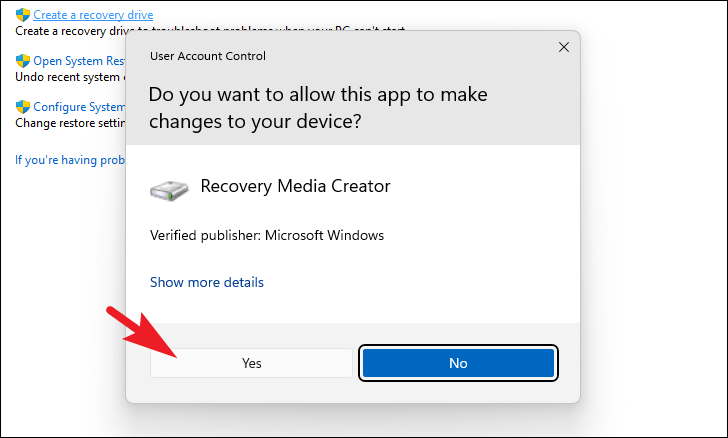
Step 5: In the Recovery Drive window, make sure to check the box labeled Back up system files to the recovery drive, then click Next.
Note: Ensure you have inserted a USB drive with at least 32 GB of storage capacity before proceeding.
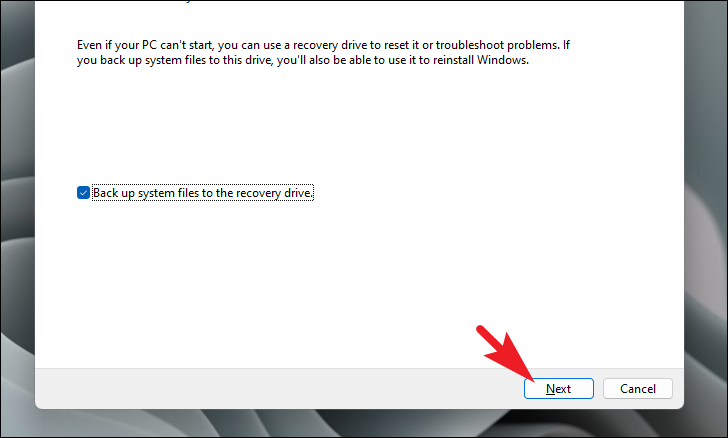
Step 6: Windows will scan for available USB drives. Select the USB drive you want to use for the recovery drive, then click Next.
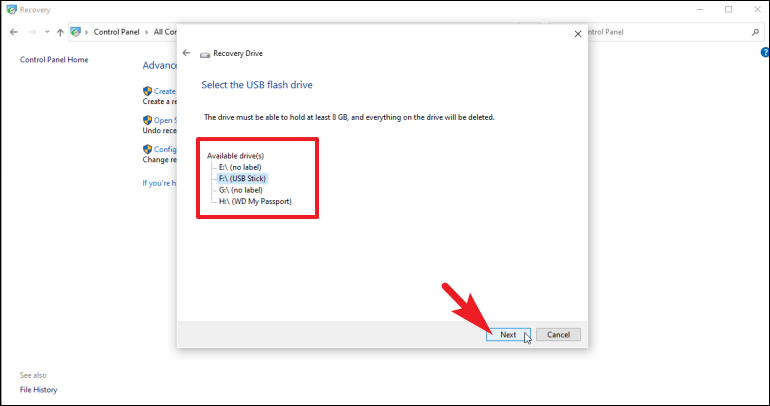
Step 7: A warning message will inform you that all data on the USB drive will be deleted. Ensure you have backed up any important files from the USB drive. When ready, click Create to start creating the recovery drive. This process might take some time, depending on your system and USB drive speed.
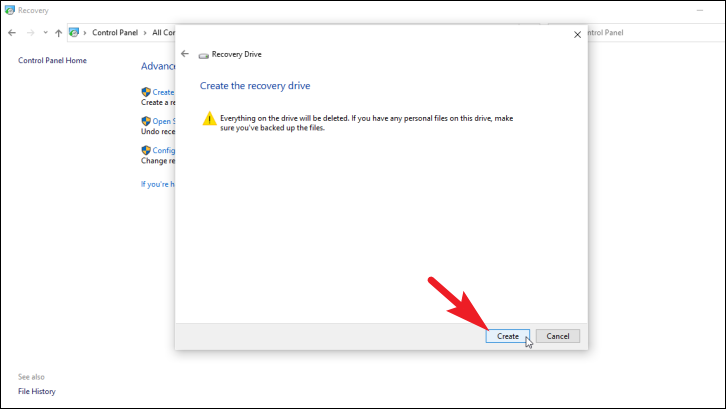
Once the process is complete, you have successfully created a Windows 11 recovery USB drive. You can use this drive to troubleshoot and restore your PC in case of major issues.
How to use Windows 11 USB recovery drive
Using the Windows 11 recovery USB drive is straightforward. Even if your PC cannot boot normally, you can use the recovery drive to access recovery options.
Step 1: Insert the recovery USB drive into your PC. Restart your computer, and during the startup process, press the appropriate key to enter the boot menu. Common keys are F12, F2, Del, or Esc. Refer to your computer's manual for the specific key.

Step 2: In the boot menu, use the arrow keys to navigate and select your USB drive from the list of bootable devices. Press Enter to boot from the USB drive.
Step 3: Once the system boots from the USB drive, you will see the recovery environment. Click on Recover from a drive.

Step 4: Choose between Just remove my files and Fully clean the drive. The first option is quicker and suitable if you plan to keep the PC. The second option is more secure and erases data completely, which is ideal if you are disposing of or giving away your PC.

Step 5: Review the information displayed about what will happen during the recovery process. When you are ready, click Recover to start restoring your PC. The recovery process will begin and may take some time to complete.
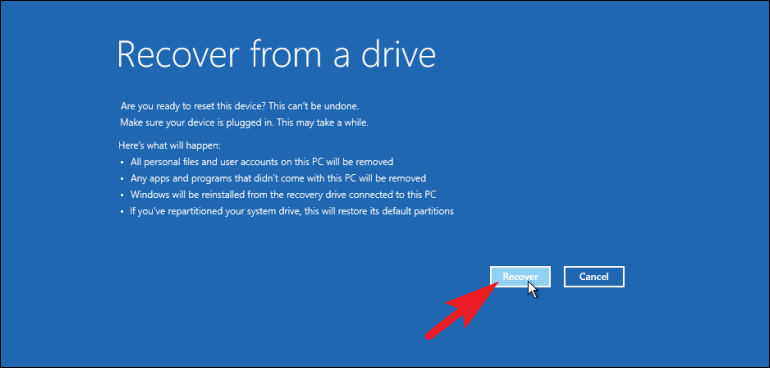
Once the recovery is complete, your PC will be restored to its factory default settings. All personal files and applications installed after purchase will be removed. If you have a backup of your personal data, you can restore your files after the recovery.
Creating a Windows 11 recovery USB drive is a simple yet essential step to safeguard your system. It's always good to be prepared in case you encounter serious issues with your PC.








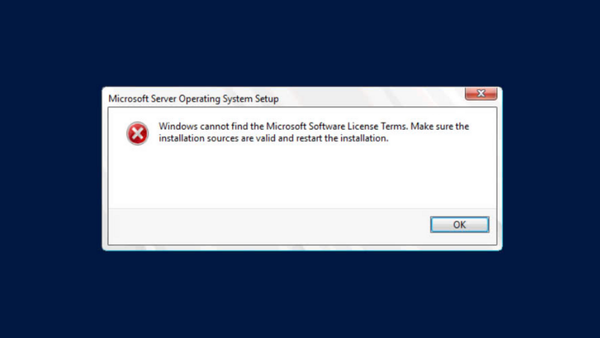
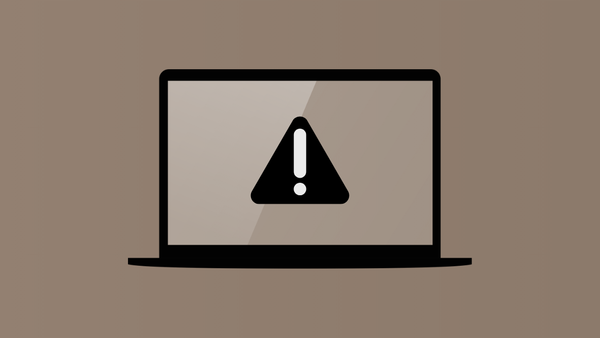
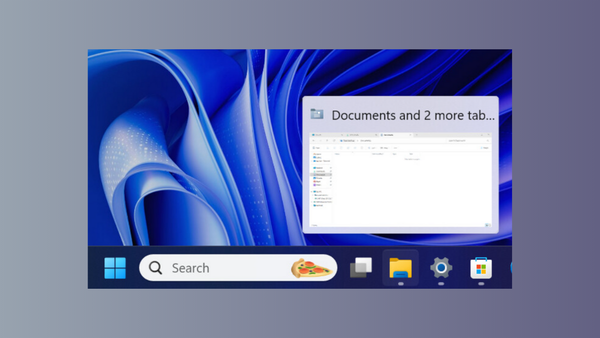
Member discussion